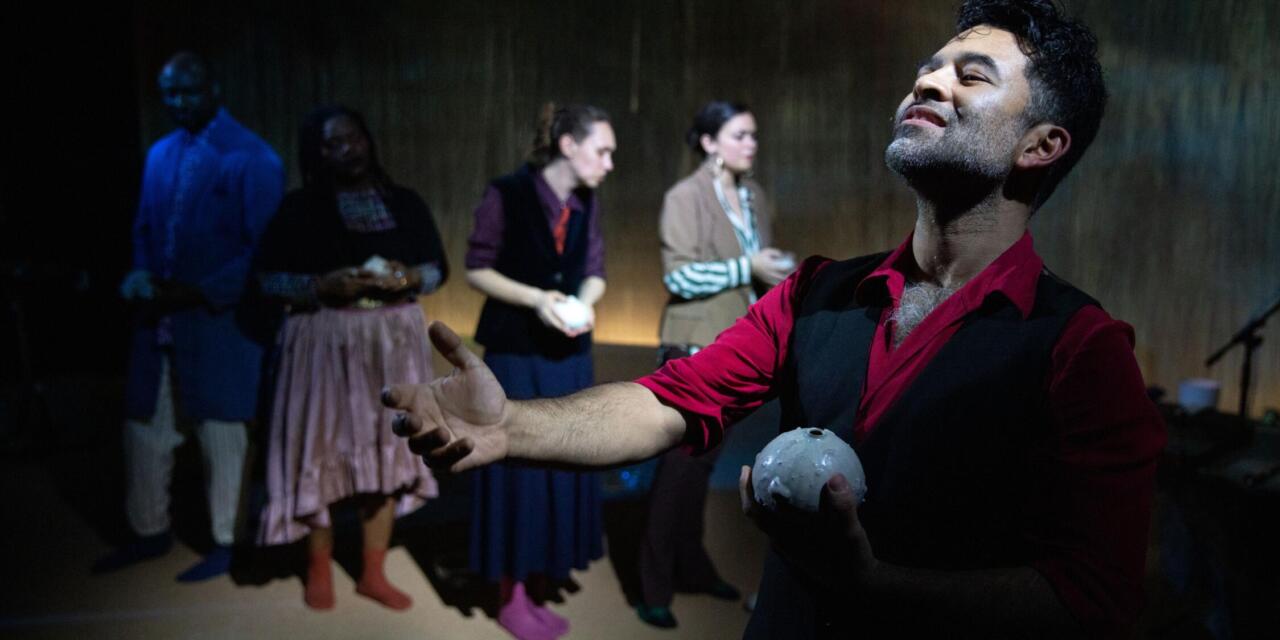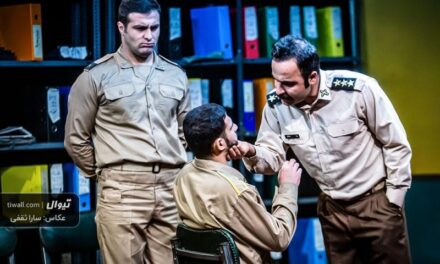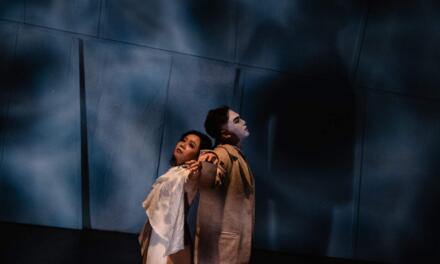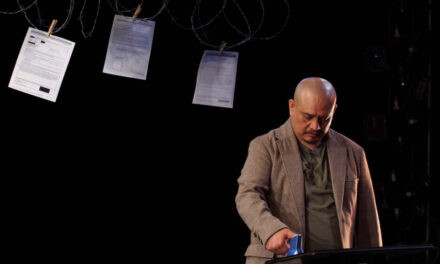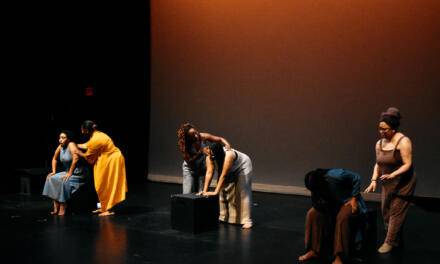Gelsey Bell’s Morning//Mourning is a quirky, experimental opera that defies categorization. It is part narration, part singing, part electronic music, and part science fiction. Set in a post-human world, the opera imagines a future where forests return and new species abound, while humans disappear. An ensemble of five vocalists/multi-instrumentalists lead us through the fantastical transformations of the Earth over a cosmic time scale, starting from 30 years later, then the next hundred, the following 5000, 50,000, one million, and beyond.
Bell’s opera is inspired by Alan Weisman’s speculative fiction, The World Without Us (2007), which poses a thought experiment on what would happen to nature if humans were to suddenly disappear without a trace. Finding the book irresistible and strangely optimistic, Bell went ahead and wrote an opera that confronts humanity’s impact on earth head-on.
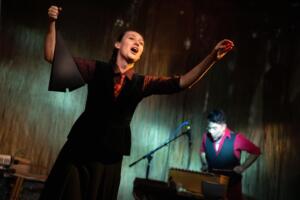
Gelsey Bell. Photo Credit: Maria Baranova
Bell’s boundary-blurring aesthetic is evident right in the opening. Audiences were plunged into total darkness as acousmatic voices entered their ears. Wordless syllables were vocalized with dramatic fluctuations, momentarily making us mishear them as woodwind instruments. This sense of figuring things out acoustically alludes to the primordial—or in this case, the speculative future—a world with no words, no rational thought. The intentional acoustic ambiguity plays around with the notion of de-centering humans, and putting them in relation to objects.
Ásta Bennie Hostetter’s costume design for each character has a similarly defamiliarizing effect, which gestures to a historically ambiguous time and space. Rather than come up with a typical sci-fi look, Hostetter draws on and brings together a wide variety of familiar costume elements, effectively making the familiar appear strange. Director Tara Ahmadinejad remarked on this out-of-time quality the costumes evoke, which upends stereotypical—or exotic—representations of sci-fi characters. This, in turn, imparts a certain ontological vagueness, which preserves—and respects—the subjects’ unknowability.
The sheer variety of instruments used is mind-blowing, to say the least. The daxophone, an electric wooden experimental instrument invented in the 1980s, is featured prominently. It is capable of generating animal-like vocal sounds, an apt choice for the opera’s posthuman subject matter. There are a myriad of sound objects being experimented as instruments. Ahmadinejad who has done much object-based work in the past, believes that objects harbor immense storytelling potential. But there are also many memorable songful moments composed in the folk idiom, as the characters engage in communal bonding with each other.
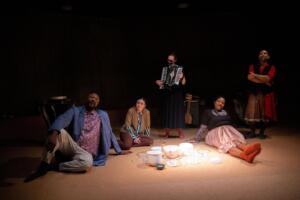
Bowls and ceramics used as musical instruments. Photo Credit: Maria Baranova
Each character plays many instruments. Bell (ARI) plays the daxophone, accordion, and banjara; Ashley Pérez Flanagan (EL) plays with objects; Justin Hicks (MAG) plays the synth, Sundrum, and autoharp; Aviva Jaye (KAI) plays the Celtic harp; Paul Pinto (SO) plays the metallophone, synth, and percussion. As Bell revealed, the opera is written in development with her singers/instrumentalists, with structured improvisations in some parts, which demands a strong collaborative ethos—and trust—from the performers.
The fabulous alchemy generated by the instruments creates a portal, which leads us to something larger than life, and so utterly unlike anything we have encountered before in opera. Of course, this would have been impossible without PROTOTYPE’s daring programming, which never stops at revitalizing this 400-year old tradition.
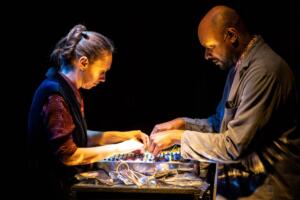
Gelsey Bell and Justin Hicks. Photo Credit: Maria Baranova
This post was written by the author in their personal capacity.The opinions expressed in this article are the author’s own and do not reflect the view of The Theatre Times, their staff or collaborators.
This post was written by Jingyi Zhang.
The views expressed here belong to the author and do not necessarily reflect our views and opinions.

